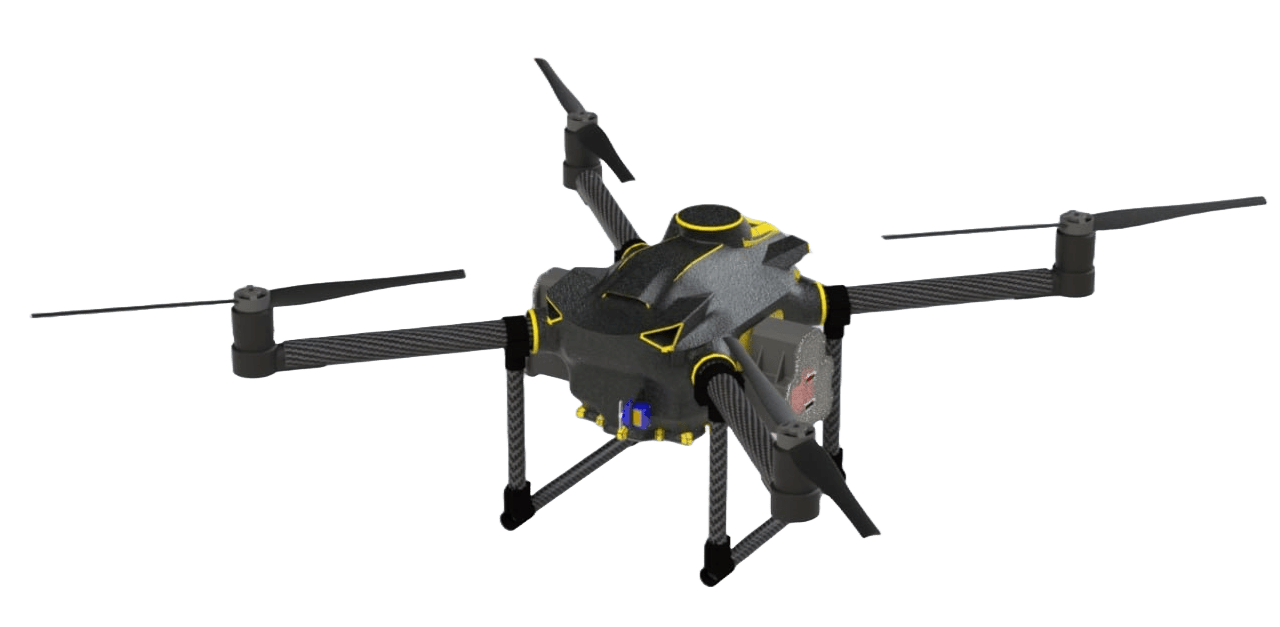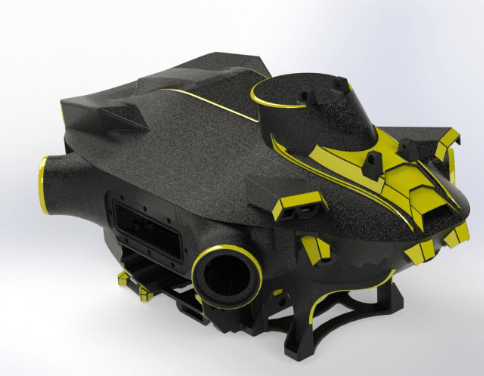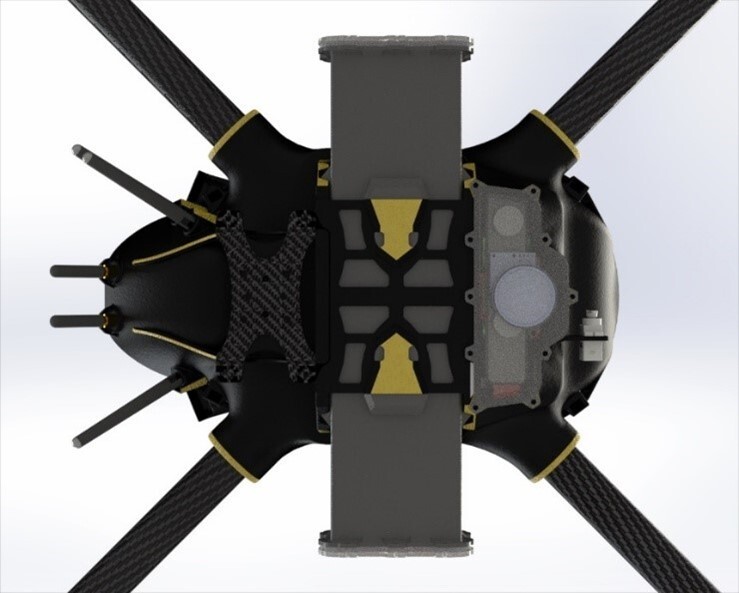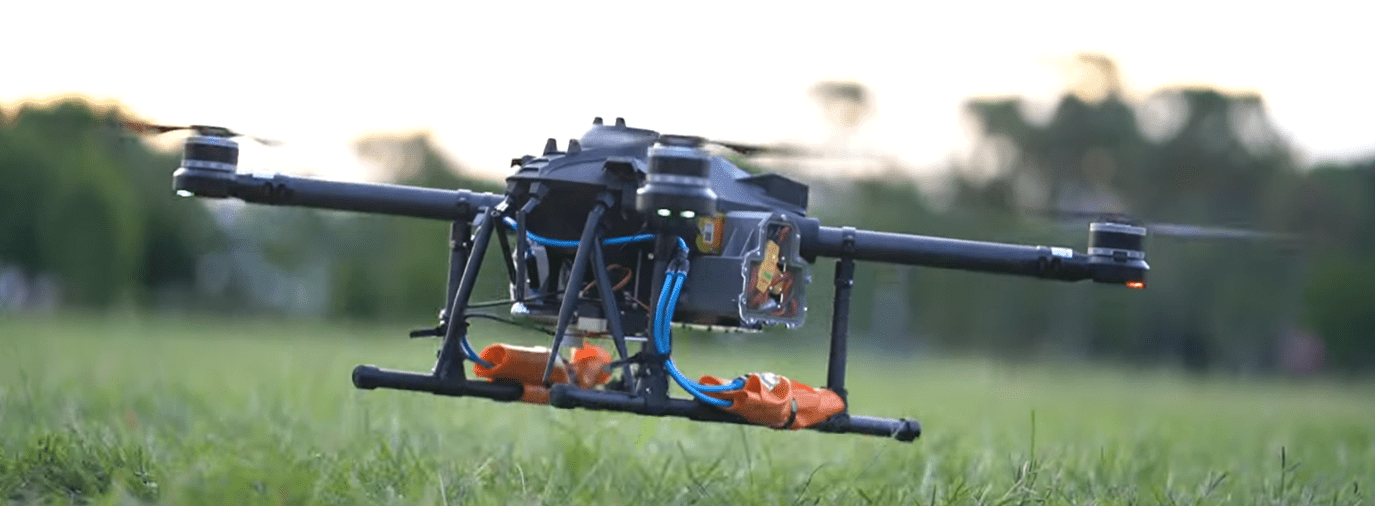
After doing a deep review of our previous drone, the Jellyfish 2.0 is designed to be waterproof while still being lightweight, increasing flight and testing time significantly.
Structural Build
The Jellyfish 2.0 consists of a laser cut frame made from carbon fibre for structure.
All peripherals are mounted onto the frame, while a composite shell that is fabricated using Multi Jet Fusion (MJF) 3D printing envelops the frame to protect the internals from weather elements.
To allow for the internals to be properly cooled, S ducts and exhausts are integrated to the cover of the shell to allow for airflow, while still preventing water ingress.


Battery Hull
Two battery slots at each side of the shell allow for easy hot-swapping of batteries. The batteries are enclosed in a waterproof hull, that are secured to the shell via clips.
Floatation
Part of the RobotX requirements is for the drone to be retrievable in the event it enters a waterbody.
A fully independent floatation system allows for retrieval of the Jellyfish 2.0 in the unfortunate event of a crash into the water. Two floats are inflated via a servo-activated gas canister, triggered by a water sensor mounted on the exterior.
